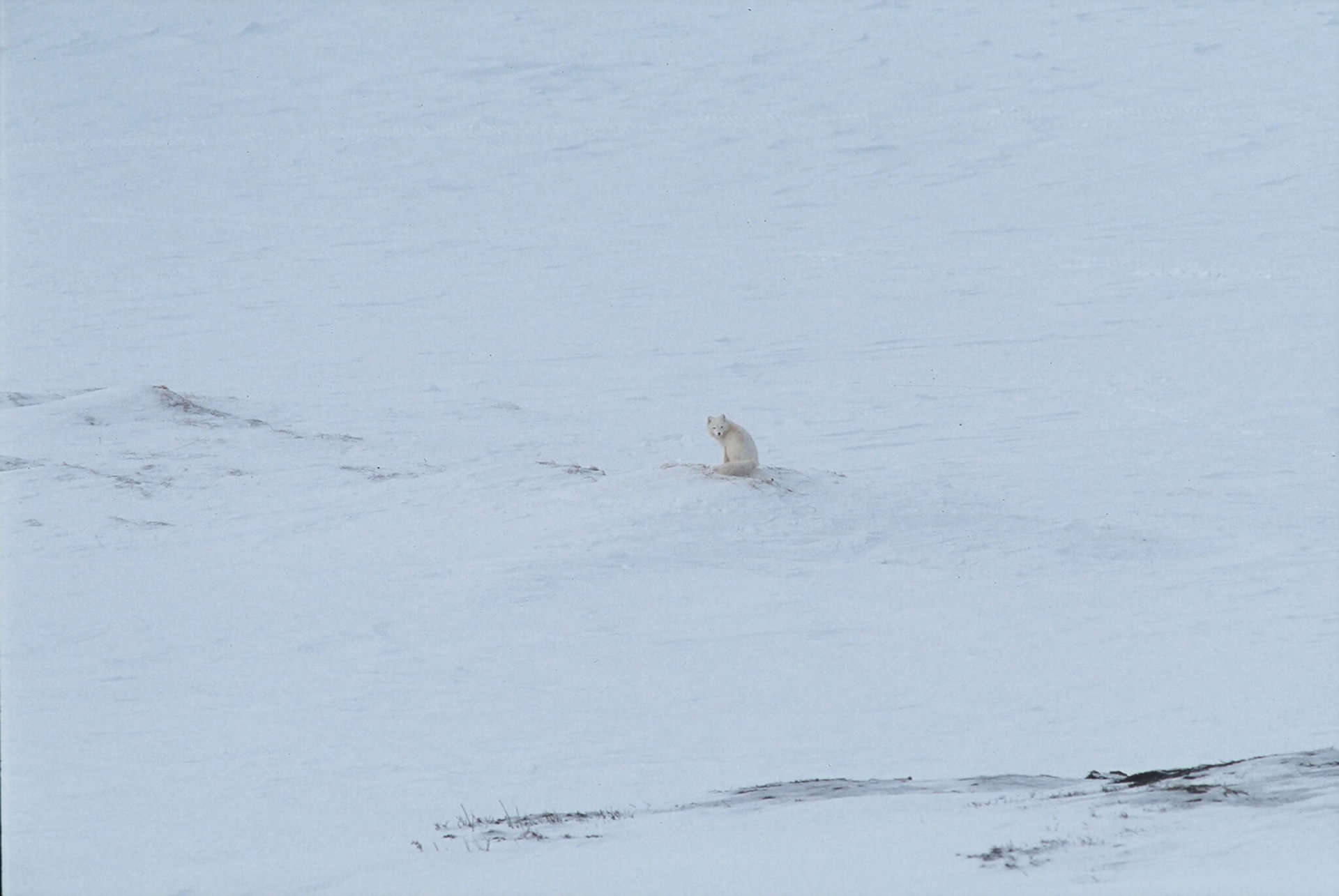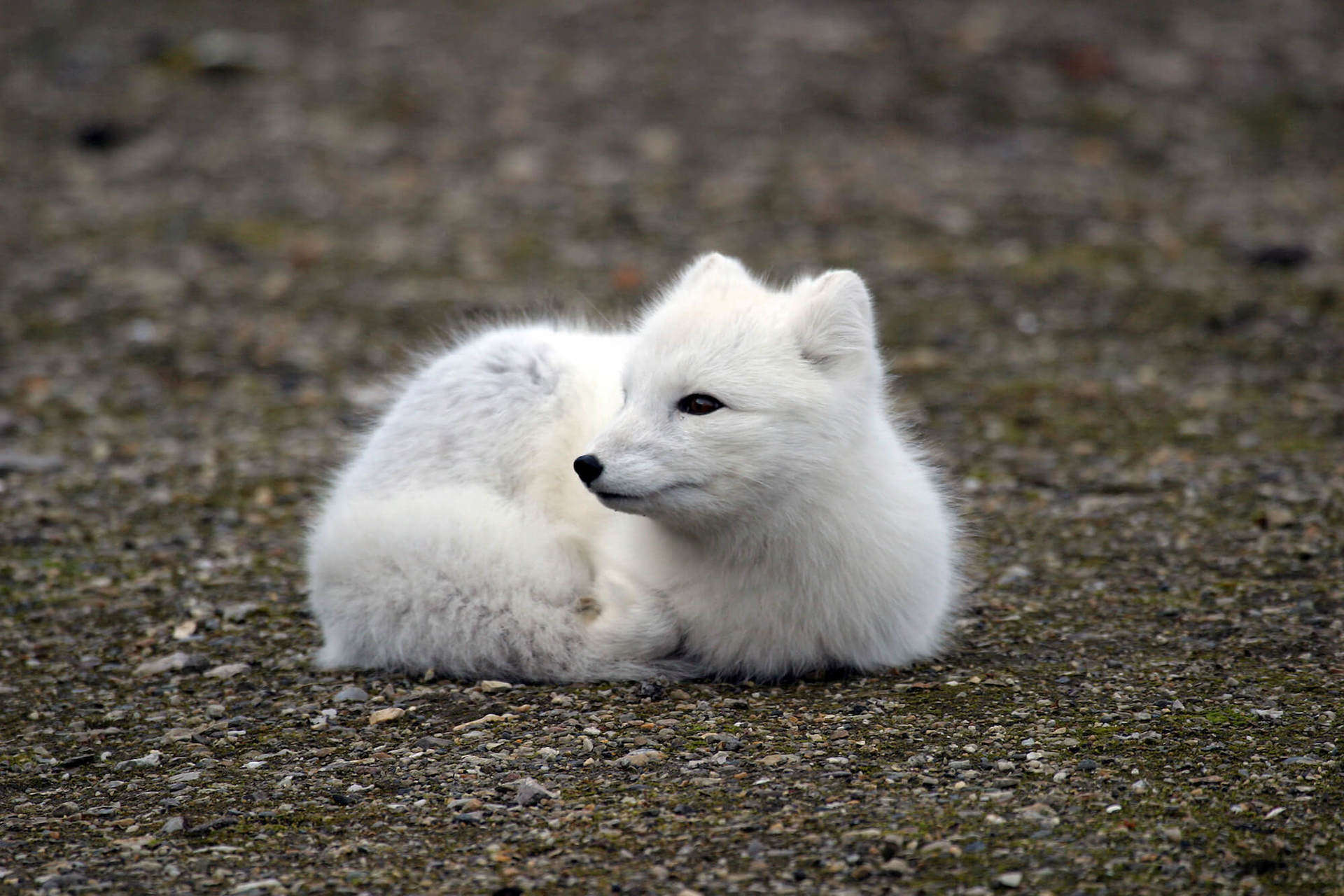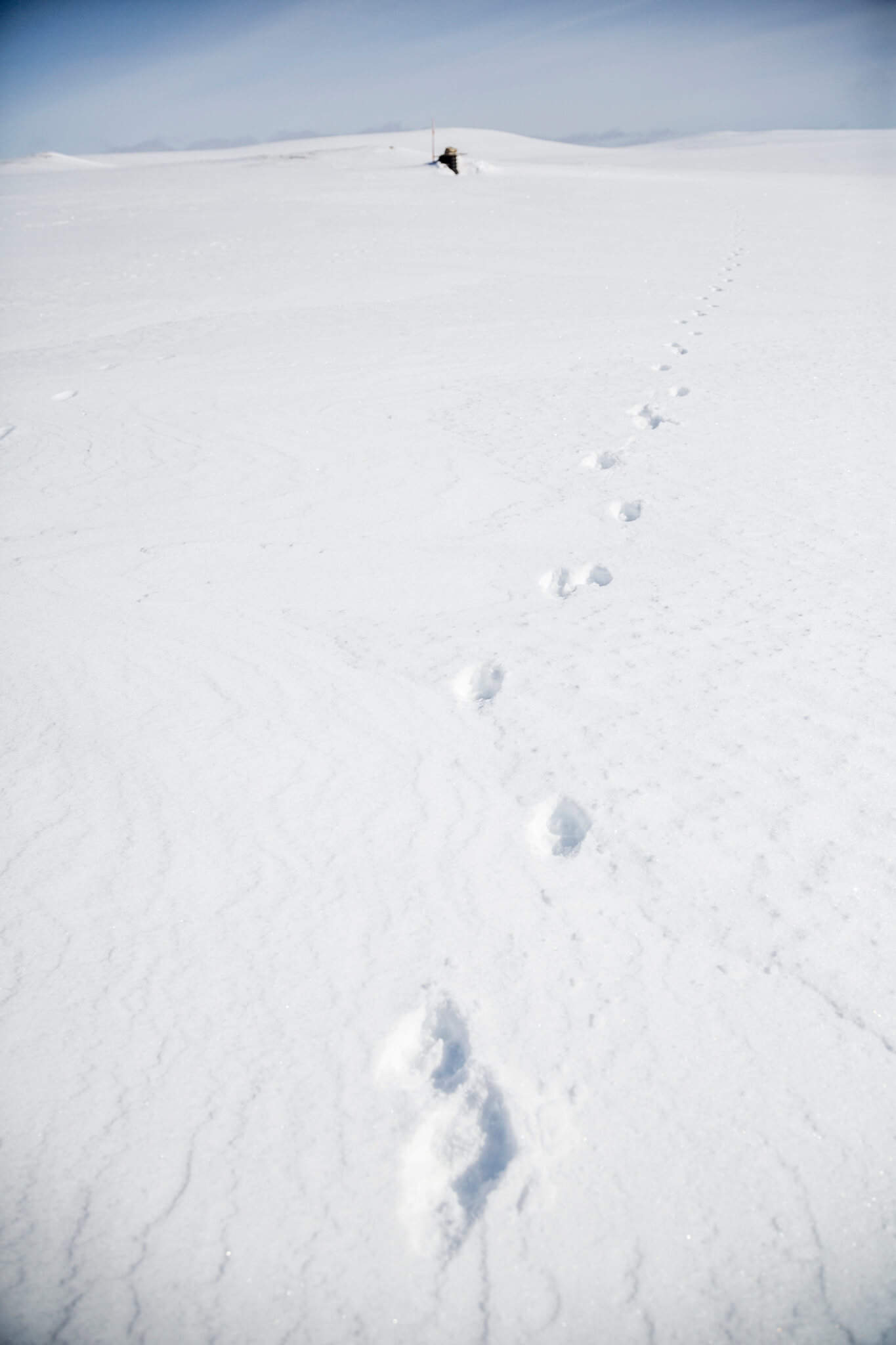The survivors and the climate
For an Arctic fox, -30°c is no biggie. In fact, it can handle temperatures down to a positively freezing -70°c, by rolling into a ball, putting its chin on its paws and sweeping its tail over its nose. Like an impenetrable fur-ball, it can keep itself warm through even the most brutal of cold snaps. No, it’s not the cold that is the arctic fox’s problem. It’s climate change. Warmer temperatures will be its demise.

But there is one man who doesn’t plan on giving up the fight. Anders Angerbjörn, researcher and professor at Stockholm University, has been studying the Swedish arctic fox population for 30 years, and has seen how supplementary feeding and other measures have helped the population recover from the brink of extinction.
“In 2000 it was looking really bad. There were a total of 50 arctic foxes in Sweden, Norway and Finland. If we hadn’t stepped in and helped, the population wouldn’t have recovered,” he says as he points towards a wiggly graph showing the ups and downs of the arctic fox population.
Today, there are about 200 arctic foxes in Sweden, but the numbers can vary greatly from year to year. The large peaks and troughs depend primarily on access to food. And when it comes to the Swedish Arctic fox, there is a particular little rodent that is the food of choice – the lemming.

There are years when the mountains are alive with lemmings and then there are years when they are hardly seen. The so-called ‘lemming years’ come in four-year cycles, and the arctic fox’s numbers follow the same cycle.
Just one year without lemmings and the cubs that are born will die. And we can only count on about half of the adult foxes surviving a bad lemming year.
Anders Angerbjörn
After a crash, the number of lemmings slowly increases again. The adult foxes that survived are more experienced and know how to avoid other dangers. Their cubs get a good summer with lots of food, which leads to a good winter. The young cubs are so strong that they start mating the following year and have new cubs. But then the population crashes again.
A year without lemmings doesn’t just mean a shortage of food for the arctic foxes. It also means they become the only prey for animals higher up the food chain. Golden eagles and red foxes, which also prey on lemmings, start to hunt arctic foxes instead.

“This is why it’s so misleading to talk about how many cubs are born in a good year. There can be new litters in every den in a good summer, but we know that their chances of surviving the crash around the corner are slim.”
But the biggest challenging facing the Arctic fox is climate change and its knock-on effects on lemming and other rodent populations. When there’s an absence of an insulating layer of snow to protect them from the winter cold, they die. Mild and varied winter weather with rain that freezes also leaves a layer of ice over the terrain so the rodents can’t get to their food. This is a catastrophe for lemmings and the animals that live on them. Another consequence of climate change is that red foxes are spreading further northwards and taking over the arctic fox's territory.

By using transmitters and cameras, Anders can study the foxes’ behaviour, analysing how their personalities affect survival. The curious and bolder foxes might fall victim to eagles more often, but maybe they’re better at finding food. The shy and timid ones might escape the eagles but suffer from a lack of food.
Anders describes arctic foxes as curious, cute and intelligent. He has personally got to know a large number of individuals and after many long days and nights in their environment, they also know who he is.
“They are called ‘njalla’ in the northern Sami language, and ‘svala’ in southern Sami. These names mean careless and reckless, foolhardy maybe. But also charming,” he says, and thinks back to light summer nights with his binoculars trained on their dens. Or early spring mornings spent in snowy mountains, when the foxes lie about squinting into the sun. If you don’t know what sort of year they’re having, it can look as though they’re lying there relaxing and having a good time.
A bad year is really difficult. The red foxes leave the area, but the arctic foxes remain. They have nothing to eat, nothing at all. They try to mate but they don’t have enough energy to carry any cubs. A good year is entirely different. 2017 or 2018 is the next good year. We might get up to 120 litters in Sweden and Norway. Then the mountains will be filled with life.
You’re never too small to dream big
We all have a connection to nature. And it's truly personal. Read nine-year old Morris' story.
Use your right to roam
Allemansrätten is Sweden's Right to Roam. Find out what this strange-sounding word entails.
Why you should do an Arctic fox safari
One Swedish mountain station is offering visitors a unique chance to meet Arctic Foxes up close.
